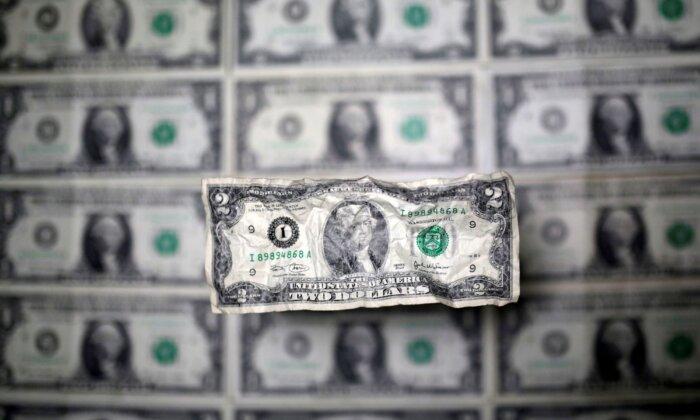LONDON—The dollar fell broadly on Thursday, with risk-sensitive Asia-Pacific currencies leading gains as investors grew more convinced of a likely peak in U.S. interest rates after the Federal Reserve left them on hold.
Focus now turns to the Bank of England and whether it conveys a similar message at today’s policy announcement.
Fed Chair Jerome Powell left the door open to another hike, but with the funds rate target ceiling at 22-year high of 5.5 percent he said the risks of doing too much or too little were now balanced.
Markets took that as a green light to stick with a sub 20 percent chance that rates will rise in December. Ten-year Treasury yields are down 23 basis points from Wednesday’s highs, equities rallied, and risk-sensitive currencies bounced.
“Powell had the opportunity to raise a bit of concern with the latest rise in short-term inflation expectations but he chose not to do that,” said Kristoffer Lomholt, head of FX research at Danske Bank.
“There was a possibility of sending a much more hawkish signal but he chose not to and I think that’s what markets are reacting to.”
The dollar index, which measures the currency against six major peers, was last down 0.1 percent at 106.41 and down by around 0.8 percent from Wednesday’s high.
The euro rose 0.3 percent to $1.0598, the Swiss franc rose for a second day in a row and the yen was helped further from a one-year low to 150.155 per dollar.
The yen has been struggling for traction, even as the Bank of Japan on Tuesday made another relaxation of its yield curve control policy.
A fall to a one-year low of 151.74 per dollar and 15-year low of 160.83 per euro after the BoJ’s announcement had traders on watch for possible intervention to prop up the currency.
“The important thing is the tempo of the fall,” Danske Bank’s Lomholt said.
“That’s when we have seen them verbally come out and talk against the appreciation.”
Meanwhile, sterling crept 0.2 percent higher to $1.2173 and slipped to 87.14 per euro in anticipation of rates being held at high levels.
Markets price an almost 90 percent chance the Bank of England keeps rates on hold at a 15-year high later on Thursday, but have not fully priced a rate cut until September 2024—well after cuts are expected to have begun on the continent.
“Pricing is reflecting the view that BoE rates will have to remain on ‘Table Mountain’ for some months given the UK’s inflation risks,” said RaboBank FX strategist Jane Foley.
“On the assumption that the BoE indicates ... that rates are set to remain on hold for some months, sterling is likely positioned to win back a little ground versus the euro.”
The Australian dollar, which jumped 0.9 percent on Wednesday, was up and another 0.6 percent on Thursday to touch a three-week high of $0.6439. The New Zealand dollar hit a two-week peak of $0.5896.
Bitcoin, sometimes traded as a proxy for risk-taking, broke above $35,000 for the first time since May 2022.







